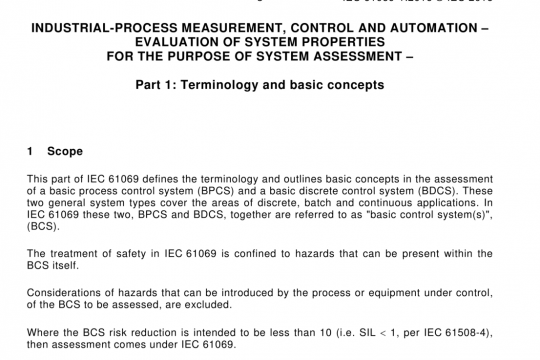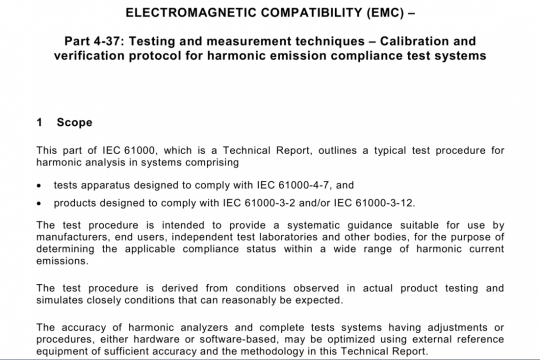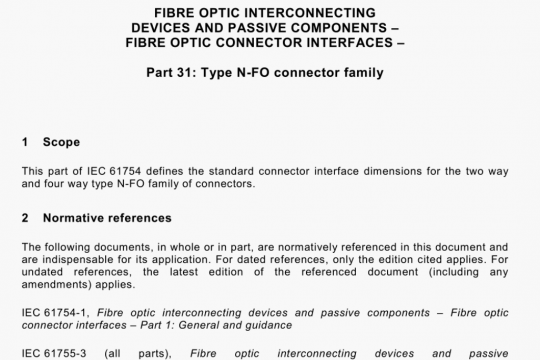IEC TS 60904-13 pdf free download
IEC TS 60904-13 pdf free download.Photovoltaic devices – Part 13: Electroluminescence of photovoltaic modules.
The camera response function (CRF) relates the actual quantity of light impinging on each element of the sensor array to the pixel values that the camera outputs. When the same object is captured at different exposure times but with an otherwise identical camera setup, a non-linear CRF causes the resulting image intensity distribution to exhibit nonlinearity, even after application of a correction for exposure time. Therefore, when analyzing image intensities, either the linearity of the CRF needs to be assured (basic methods are commonly found in the camera literature), or a correction for non-linearity needs to be performed using image processing. Scientific grade Si or lnGaAs-based sensors are often linear or have a correction for non-linearity embedded. Neglecting non-linearity will cause erroneous results when applying procedures for image correction that are given in Annex A or any quantitative analysis.
To obtain maximum image resolution and electroluminescence signal, the optical axis of the camera is placed perpendicularly and as close as possible to the module face to image the solar cell or module area. Images captured at the highest resolution may require a longer exposure time and time to transfer from the camera and process. Binning features may exist to combine pixels for lower resolution and shorter image processing times. Gain feature may exist to amplify the signal of the EL image.
4.1.1.2 Lens
Lenses shall be free of absorption filters or coatings that remove the infrared near the band- gap of the semiconductor material to be examined. Optical glass is generally suitable, however Ge lenses will be necessary for measuring EL from the very low band gap materials (under 0,6 eV). Lenses vary from telephoto to wide-angle in focal length. Choice will depend on the specific application and geometric considerations when capturing the image. Wide- angle lenses that have short focal lengths used in conjunction with the higher resolution cameras capture a larger FOV. The camera may be placed much closer to the subject, which is useful when space is constrained. Some wide-angle lens optics however cause undesirable barrel distortion in the images that will require correction by post-processing. Lenses with longer focal lengths generally have less barrel distortion and can therefore more accurately image a module, whereby the resulting images may require little or no correction by post processing. Lenses may feature components that correct for the difference between visible and infrared wavelengths, which can aid in focusing.
Lenses typically have an aperture with the size referred to by a f-number. Ignoring differences in light transmission efficiency, a lens set to a greater f-number has less light gathering area and projects less electroluminescence signal to the image sensor. Depth of field increases with increasing f-number. Image sharpness is related to f-number through two different optical effects; aberration, due to imperfect lens design, and diffraction, which is due to the wave nature of light. Many wide-angle lenses will result in significant vignetting at the edges of the image when using a smaller f-number.
4.1 .1 .3 Filters
Filters on the camera lens may be used to help cut light of extraneous wavelengths from being detected. 850 nm to 950 nm long-pass filters may be used when imaging near band- edge EL from modules with silicon cells.
4.1.2 Dark room Imaging studio or environment
A darkened environment is favored for high quality images. Precautions should be taken to eliminate stray light entering the imaging studio, such as with use of hard walls, curtains, baffles, and sealing of any gaps with material that are of light absorbing nature (black). If a filter is used on the camera, then LED lighting may be used that emits light only in the spectrum that is cut by the filter. For non-laboratory measurements, minimize extraneous light when possible. For example, perform measurements at night. If stray light is present, an image subtraction procedure will be required, as discussed in 4.1 .5.2.IEC TS 60904-13 pdf download.




